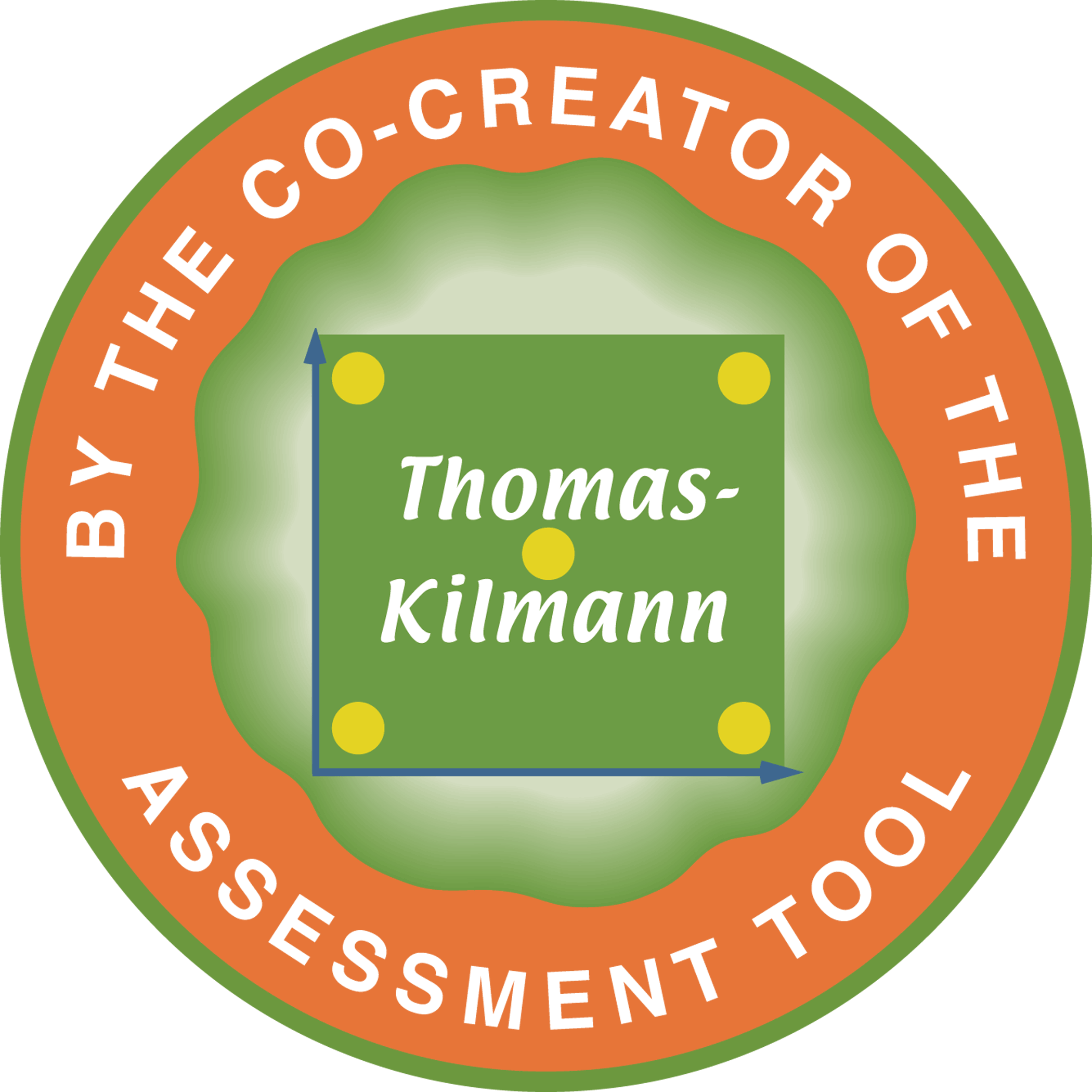10 Apr Using the Thomas-Kilmann Conflict Mode Instrument
by Ralph H. Kilmann
Conflict exists whenever the needs of two people appear to be incompatible—which reflects relevant differences between them. The fundamental question in conflict situations is always the same: How can people resolve their differences so their needs and concerns—both short term and long term—will be met?
RESPONDING TO THE TKI
Taking the TKI is the first step in learning how you typically approach differences with others and why you might not be getting your needs met. Like most people, you’ve probably developed a habitual way of dealing with conflict—always trying to resolve differences in the same old way, with little variation. But if you become more aware of the five alternative modes for handling conflict (and learn how to make effective use of each mode), you will surely achieve greater happiness and success in life.
Once you’ve responded to the TKI, calculated your scores, and profiled your results, you’ll then discover your relative use of all five conflict-handling modes: competing, collaborating, compromising, avoiding, and accommodating. And for these five modes, you’ll be shown which ones you use too much (out of habit) and which ones you use too little (because you haven’t yet learned when—and how—to properly use them).
INTERPRETING YOUR TKI PROFILE
After you’ve profiled your scores, the interpretive materials in the TKI booklet provide valuable information on when to use each mode. (See the TKI Sample Report.) And then, for those modes that you typically use too much or too little, a series of developmental questions are provided to help you use your most popular modes with more restraint and your least popular modes with more confidence. Ultimately, with practice, you can develop a balanced profile (no high or low scores), which means you’ll now have equal access to each mode in every conflict situation.
ASSESSING THE CONFLICT SITUATION
You can also learn how to read the eight key attributes of a conflict situation that signal when one mode will likely work better than other modes in resolving differences: (1) Is the conflict situation plagued with overwhelming stress? (2) Is the conflict simple (one dimensional) or complex (multi-dimensional)? (3) How important is the topic to both persons? (4) Is there sufficient time (or will people make the time) to address their conflict? (5) Is there sufficient trust between both people (to share their true needs and concerns with one another)? (6) Do people have good listening and communication skills (so they can hear what the other is saying without getting one another defensive)? (7) Do cultural norms and the reward system encourage people to share their true needs and concerns? (8) How important is the relationship to both people (and do they want their relationship to last)?
The way you answer these eight questions will determine which conflict mode is most likely to get everyone’s needs met—short term and long term. In time, most of the key attributes of a conflict situation can be changed (using the principles and practices of planned change and organizational development), so more people will achieve more collaborative resolutions—which will provide everyone with more happiness.
USING EACH MODE EFFECTIVELY
Regardless of which mode you choose to use in a conflict situation, you still have to use that mode effectively. Especially when using the three assertive modes (competing, collaborating, or compromising), without realizing it, you might be communicating in a way that gets the other person defensive (by speaking in a condescending, arrogant, or demeaning manner). Alternatively, you can learn how to use any conflict-handling mode in a manner that supports, respects, and affirms the other person—which is more likely to lead to a workable resolution. Each conflict mode (including the unassertive modes of avoiding and accommodating) can thus be used very differently—with very different results. As a result, before you can use each mode as intended, be sure to practice how to effectively communicate your needs and concerns to others—whenever your wishes initially appear to be incompatible.
Once people can assess the key attributes of a conflict situation and how to effectively use each of the five modes, they can then learn how to use several modes—in sequence. A person might begin with the competing mode, to see if he can get his most important needs met. If that doesn’t work (because the topic is also very important to the other person), the next approach might involve collaborating with the other person. But if both people run out of time, they can then use either avoiding (to postpone the discussion for another day) or compromising (so at least both people get some of their needs met for the time being). Or one person might decide the issue isn’t as important as it first seemed, so he’ll use the accommodating mode (so at least the other person gets her needs met). Naturally, using a sequence of one conflict mode after another, as a complex situation unfolds in unpredictable ways, will likely bring greater happiness to both people than would be the case if only one mode were used, irrespective of a dynamic—changing—situation.
MODIFYING THE INSTRUCTIONS
Lastly, there’s an easy way to modify the TKI to capture a more specific situation, which will enable you to conduct a more effective training program. As it stands, the standard instructions to the TKI are intentionally general: “Consider situations in which you find your wishes differing from those of another person. How do you usually respond to such situations?” But if the primary purpose for using the TKI is to learn about work situations (and not about life in general), the instructions to the TKI can be modified as follows: “In work-related situations, we sometimes find our wishes differing from those of another person. How do you respond to such situations?” Or if the primary purpose for using the TKI is to learn about family situations, friendship situations, community situations, client situations, or some other well-defined situation, the instructions to the instrument can be modified accordingly.
But always remember: The particular modification in the TKI instructions should always be kept clearly in mind, as you respond to all thirty items in the instrument. And if you’re administering the TKI to other people, remind them of the unique perspective that should guide all their responses.
For additional information on using the TKI, see: FAQs and Contact Us.





